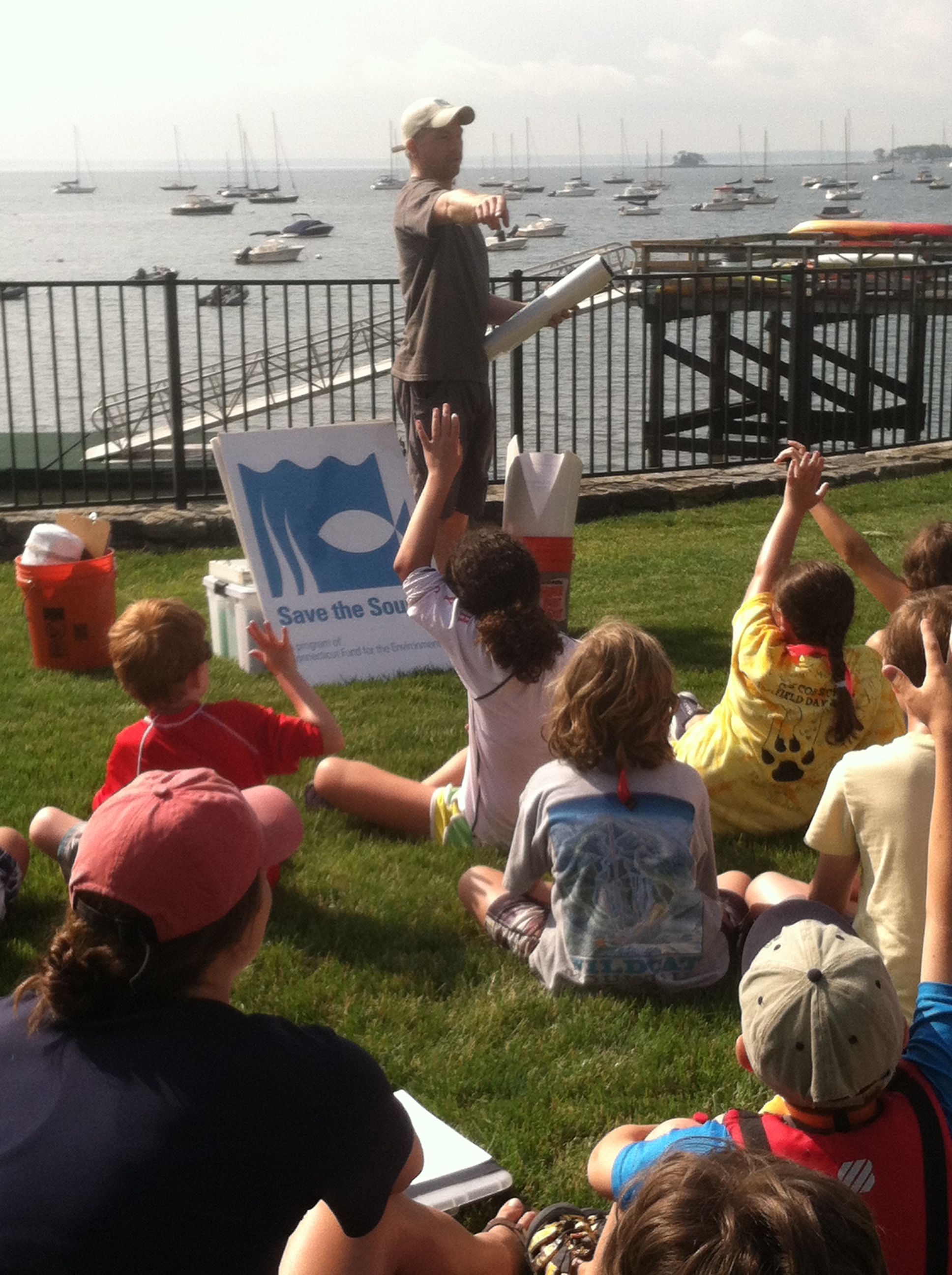 Cameron Okie has gotten off to a fast start in his position as summer outreach coordinator for Save the Sound. Focusing on western Long Island Sound, Cameron is conducting water quality testing, providing environmental education programs and building support for a cleaner Sound among various organizations and clubs.
Cameron Okie has gotten off to a fast start in his position as summer outreach coordinator for Save the Sound. Focusing on western Long Island Sound, Cameron is conducting water quality testing, providing environmental education programs and building support for a cleaner Sound among various organizations and clubs.
Now that he has established this summer program, we asked Cameron about his background, his expertise and what he is working on.
Q. Welcome to Save the Sound. Tell us about where you grew up and how you learned about Long Island Sound?
Cameron: I grew up in Darien, which has a small bit of Long Island Sound coastline between Stamford and Norwalk. I think I developed an environmental conservationist’s outlook from spending a lot of my childhood outdoors. I was always mucking around the intertidal zone catching things, fishing, as well as sailing, canoeing, or motoring on boats with my family. I’ve continued sailing actively as an adult both, racing and cruising. The Sound is a relatively sheltered water body and when there is wind it’s perfect for sailing.
Q. Before coming to Save the Sound, you worked as an educator on Chesapeake Bay. Who did you work for and what was that experience like?
Cameron: In 2008, I worked as mate and educator aboard the skipjack Sigsbee for the Living Classrooms Foundation (LCF) in Baltimore. LCF’s shipboard department takes mainly kids from 4th grade to high school, but also adults, out sailing on historic vessels to learn about the Chesapeake. The curriculum is as hands-on as possible, and it combines history, sociology, and science about the Chesapeake. When I started I would say that I was not inclined to working with kids, however LCF trained me as an educator, and now I can say with confidence that I can teach anything. I find it is a combination of acting, being entertaining, and of course knowing your curriculum. A foundational part of what I learned was asking students questions versus telling them answers: the Socratic Method. I’ll always consider the Sound my home estuary though.
Q: What programs are you conducting for Save the Sound?
Cameron: I am heading a two-pronged outreach program for the western Sound. In Nassau, Westchester, and Fairfield counties, I am engaging yacht clubs through educating junior sailors on Long Island Sound ecology, water quality, habitats, and animals. I am also engaging clubs through regatta sponsorships and presence.
The second part of my program is a volunteer water quality monitoring project in the Village of Mamaroneck, and hopefully soon the Town of Mamaroneck. The goal is to sample stormwater pipes for the presence of sewage. Stormwater pipes all eventually lead to the Sound, and many are quite old, which creates leaky interchange between sanitary sewer and stormwater pipes. Earthplace/Harborwatch of Westport has a state- and EPA-certified lab to test our samples.
 Q. What are some important differences and similarities between Chesapeake Bay and Long Island Sound?
Q. What are some important differences and similarities between Chesapeake Bay and Long Island Sound?
Cameron: In a geographic sense, the Chesapeake has bigger rivers and one opening to the ocean while the Sound has two. This makes the Sound a lot saltier. I was amazed at the low salt level of the Chesapeake when I went swimming down there. In an environmental sense, the Chesapeake and Long Island Sound are very similar because they have densely populated watersheds. The Sound and Bay suffer from nutrient rich runoff, low oxygen in the summer, a high percentage of impervious surfaces in their watersheds, and habitat degradation. The two also share a lot of estuarine species: striped bass, diamondback terrapins, blue crabs, hogchokers, oysters, and many more. Little things are quite different, for example they call striped bass ‘rockfish’ down there as compared to ‘stripers.’ They might have the right because most striped bass are born in the Chesapeake, but they are still ‘stripers’ to me.
Q. What lessons or information do you want children to take away from your education program?
Cameron: I’d like kids to remember that the Sound is an awesome place. They get the best feel of that by checking out animals I bring for presentations. I always remind them that I caught the animals the day before in the Sound, which is true, and they are usually amazed because they don’t normally see these animals in the Sound.
Q. Why is it important for young people to know about the Sound, its ecology, its problems?
Cameron: It is important because they will be the voters and stewards of tomorrow. I think youth education and having fun in the outdoors is the best way to create a conservationist mentality. It worked on me.
Q. Thanks, Cameron!
Posted by Tom Andersen, NY program and communications coordinator for Save the Sound.

1 thought on “Summer Outreach: ‘Youth Education and Outdoor Fun Are the Best Ways to Create Conservation Mentality’”
Comments are closed.